by Dr. Anand Titus and Geeta N. Pereira
Climate change is not something new to coffee. It has already hit the coffee farmers hard in a dramatic manner. It is happening right now, in front of our very own eyes. A combination of factors like extreme heat and cold, unseasonable rains, severe droughts and floods, prolonged high daytime temperatures and sudden drop in night time temperature has significantly affected the ecology of plantation belts.
Water resources, agriculture systems, cultural operations, plantation economics and loss of plant genetic resources has taken a severe toll, not only on coffee but also on the multiple crops grown inside ecofriendly coffee forests. Little do we realize that the very future of millions of coffee farmers is at stake?
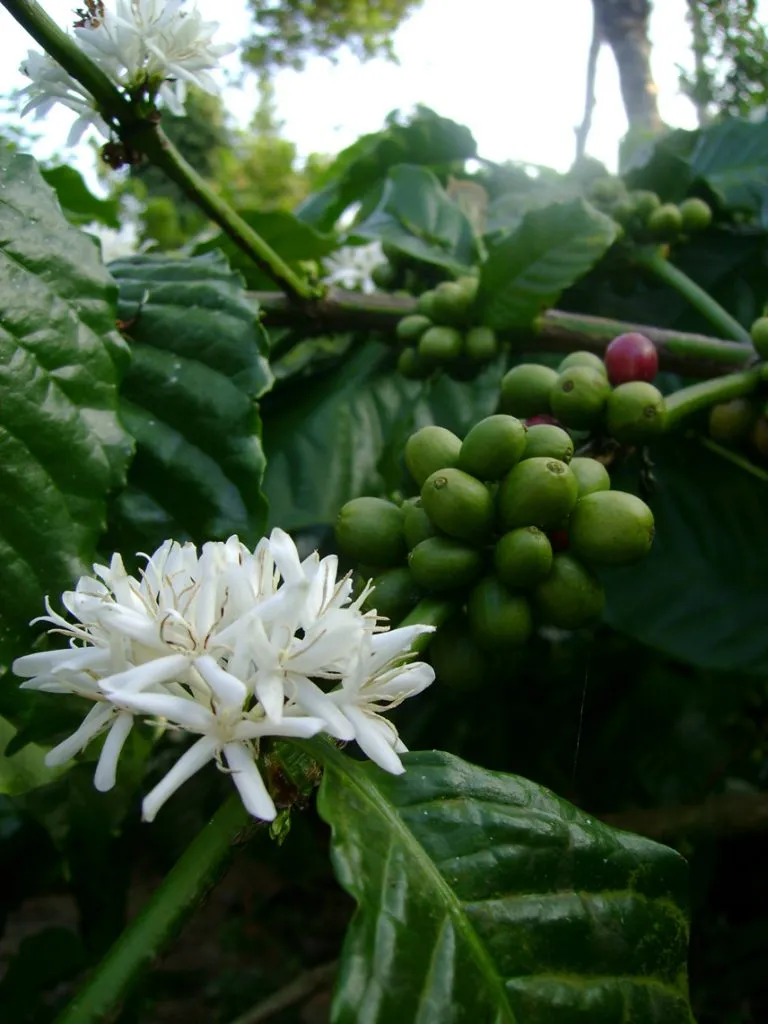
At the outset it is important to understand that the growth and development of the coffee bush is complex and encompasses a variety of anatomical, morphological, physiological and biochemical processes. Events Like shoot and root growth, hard wood formation, flower initiation, pollination, fertilization, embryo development, and fruit ripening, each of these processes, is a culmination of a series of events, many of which are microscopic.
All these processes in turn are governed by a particular set of environmental conditions. In fact plant physiologists are certain about the influence of environment on the phyto hormones and biochemical processes during growth and differentiation of the coffee bush.
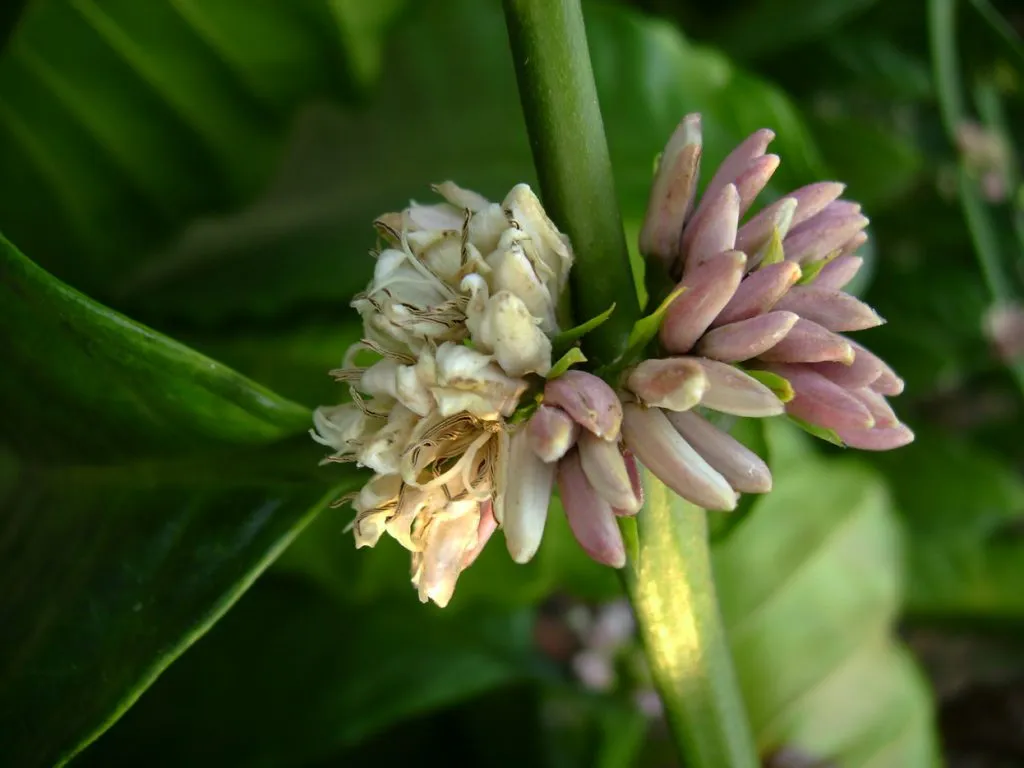
Under ideal and stable environmental conditions the coffee bush is programmed to complete a set of processes like growth and differentiation. A certain degree of flexibility is allowed. However under a different set of environmental conditions (CLIMATE CHANGE) the life cycle may be shortened or lengthened. Combating climate change inside coffee forests is the main challenge facing the present generation of coffee farmers worldwide.
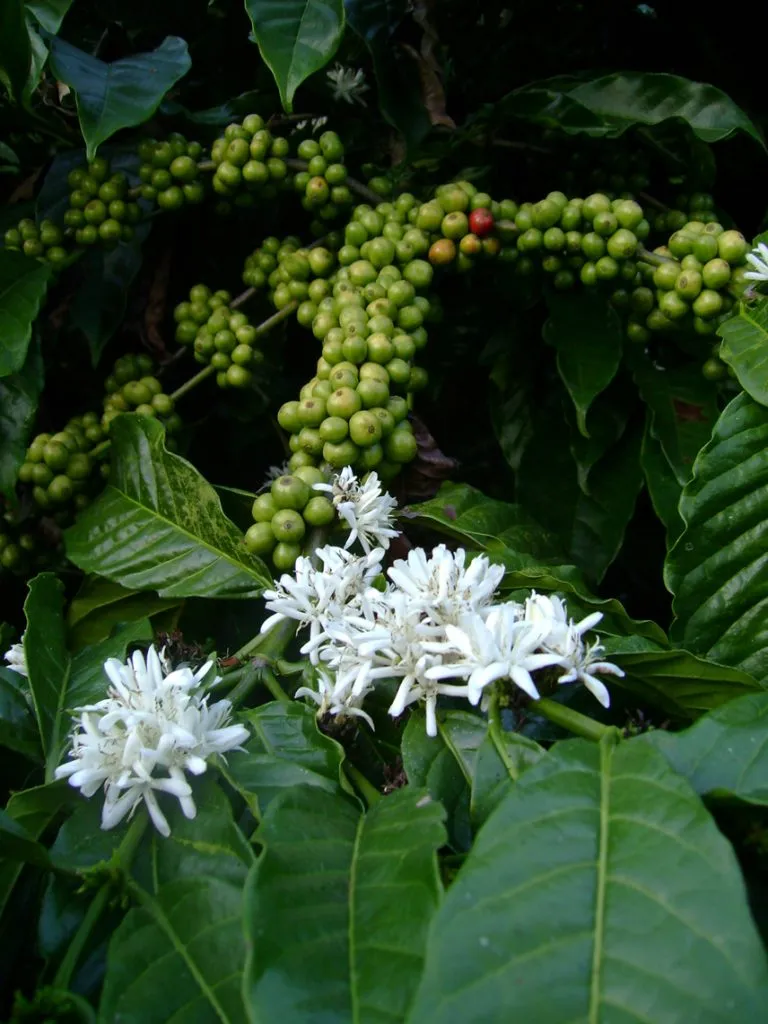
This article highlights the impact of climate change on coffee.
Coffee is a woody perennial shrub and requires great care in order for farmers to pick consistent and high yields. In the early part of the century, the weather patterns inside coffee forests was predictable and most of the operations like fertilizing, composting, liming and sprinkler irrigation was carried out anticipating the rains. In most cases the farmers were right, even though they were not assisted by computer controlled satellite weather stations. The stable Weather patterns resulted in high yields and most importantly the farming community was a contended lot.
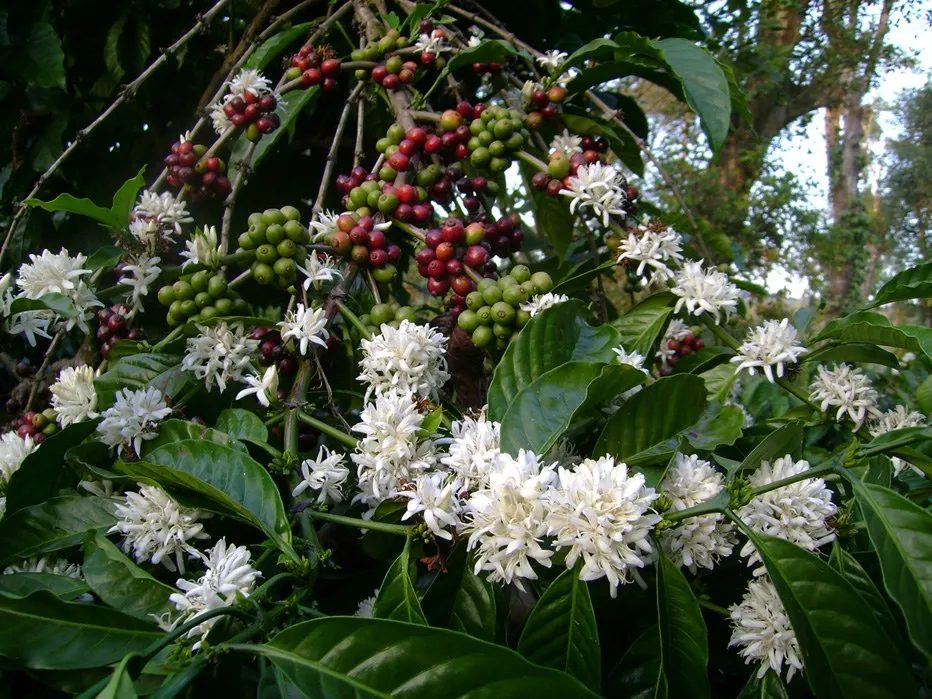
However for the past 10 -15 years the unpredictable global weather patterns has had a direct bearing on Indian coffee forests. It has reached such unmanageable proportions, that many farmers have moved away from plantations seeking refuge in urban areas. Especially, the mindset of the younger generation is in turmoil and utter chaos. The return on investment has seen a sharp decline, resulting in the abandonment of coffee farms.
CELEBRATION TIME
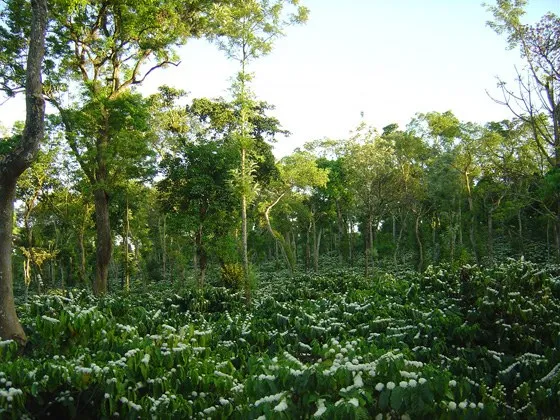
Feb, 10th, 2008 was a red letter day for a majority of coffee farmers in Karnataka. The Districts of Coorg, Chikmagalur and Hassan where ecofriendly shade grown coffee is grown received unexpected early and heavy blossom showers followed by backing showers after a period of three weeks.
This phenomenon of timely blossom showers and subsequent backing showers was not witnessed in more than 30 years. The showers at the right time and in a well spread manner gave hope to a record crop where more than 70% of the Country’s coffee is grown in Karnataka. This ideal moisture regime was supposed to yield bumper crops and the expectation from the farming community was running high.
However, a majority of the farmers overlooked the fact that on day 10 of the blossom opening, both Arabica and Robusta plantations received mild and constant rain right from the morning up to late afternoon. The dense pockets of mist during pollination also added to the misery of farmers.

Even though, the rains disrupted the 2007-08 harvest and triggered early flowering of the 2008-09 crop, farmers were happy that the coming year bumper crop would make up the losses of the previous year.
DEATHLY SILENCE
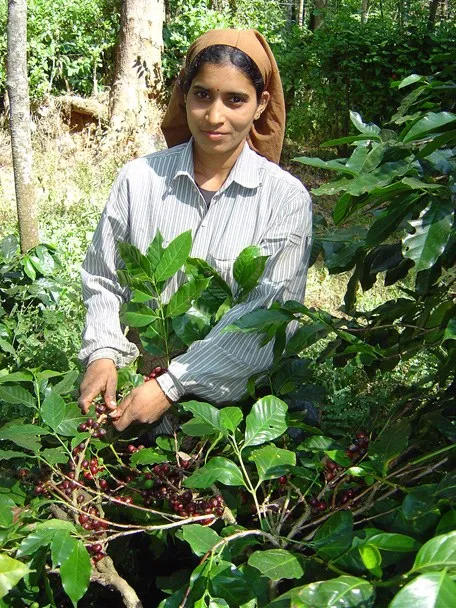
Ten months later, the Arabica picking commences and farmers are in for a rude shock. Their expectations of the blossom estimates did not translate into yield. In well maintained plantations the yield was significantly reduced to 4 bags of parchment coffee (Each bag weighing 50 KG). At the present International price (New York terminal) the returns could not even cover half the cost of cultivation.
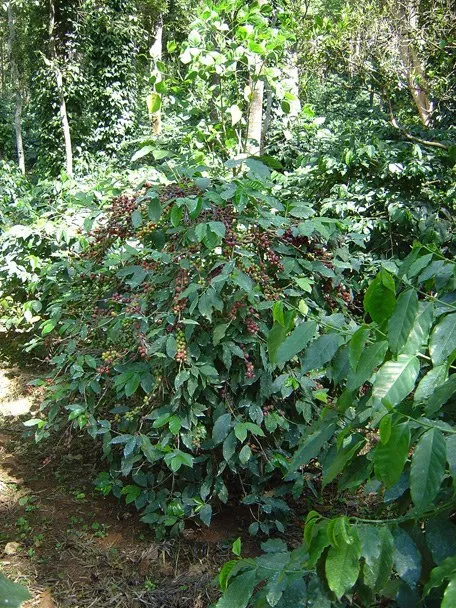
Since a vast Majority of the coffee farmers own both Arabica and Robusta in the ratio of 40:60, they were of the opinion that the Arabica yields were an aberration and that they would make up for the loss with a higher yield of Robusta. However, Robusta yields were also very low, hardly 3 bags of parchment per acre.
Added to the low yields, most of the coffees had a significantly lower out turn because of the infestation of berry borer. Coffee farmers were a desperate lot, on one hand the yields per acre were below their actual cost of cultivation and on the other high berry borer infestation resulted in penalties at the curing works.
REASONS ASSOCIATED WITH BERRY BORER INFESTATION
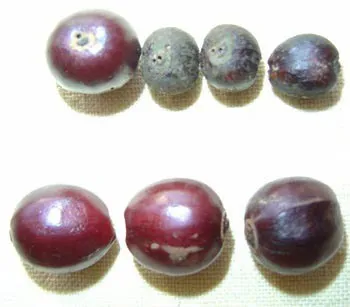
Due to the early rains, there was a considerable delay in harvesting of Robusta coffee and a major portion of the ripe berries dropped to the ground. The delay in harvest and the fact that gleanings could not be completed in time resulted in berry borer going out of control. In fact, the ideal conditions for the growth and reproduction of the berry borer resulted in its spread like wild fire from one region to the other.
CLIMATE CHANGE-IMPLICATIONS
PHYSIOLOGICAL, INTERNAL & EXTERNAL FACTORS
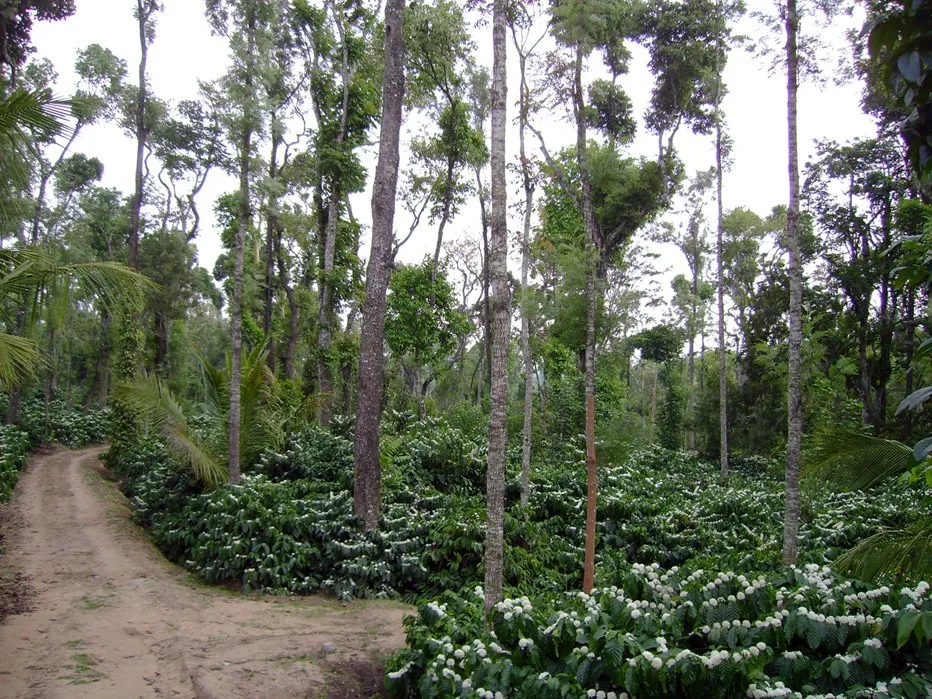
The coffee bush is a very sensitive plant and requires utmost care. The change from vegetative to reproductive growth marks a major change in the life cycle of the plant. The bush receives various internal and external stimuli that interact with the genetic information to cause changes in metabolic activity and structural organization. Physiological parameters such as plant growth, flowering, fruit set, fruit drop, fruit ripening, bean disorders, soil moisture stress, drought, and shade management play a crucial role in maintaining a healthy bush in both Arabia’s and Robusta’s.
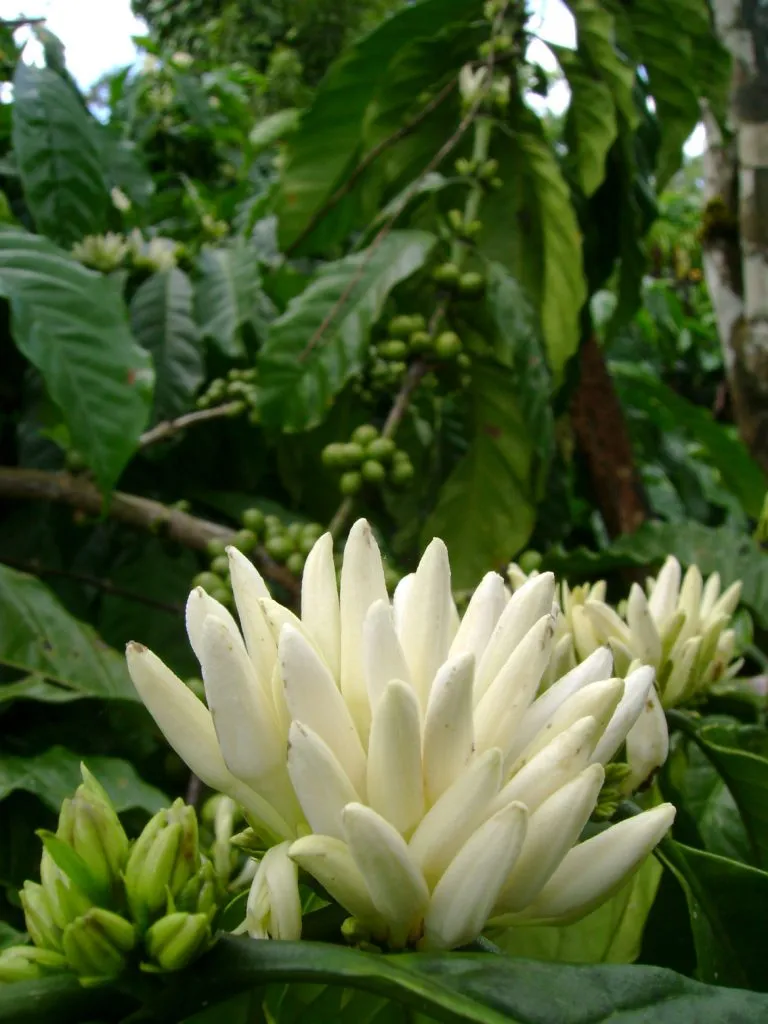
Apart from physiological aspects, both internal ( genetic ) and external factors like, climate and edaphic factors like light, temperature, rainfall, humidity, soil nutrients, soil moisture, aeration and soil temperature play an important role in the productivity of the bush.
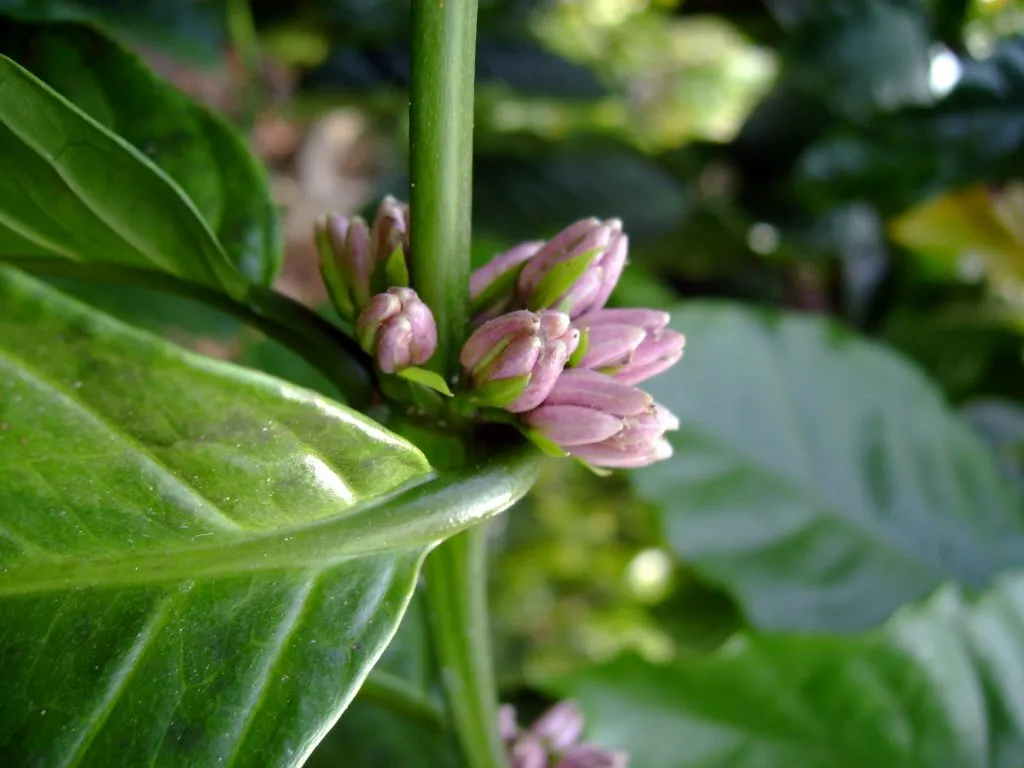
However, our observations point out that the most important point for the functioning of the coffee bush is the translocation of photosynthates to different parts, which leads to a healthy balance between vegetative and reproductive growth.
HOW DOES A COFFEE BUSH BEHAVE UNDER NORMAL CIRCUMSTANCES?
The Central Coffee Research Institute (CCRI), at Chikmagalur district has carried out pioneering work with respect to understanding the physiology of the coffee plant. Their findings suggest that under South west monsoon conditions, the pattern of shoot growth is typically of sigmoidal nature with a slow growth from March/April to July and a period of rapid growth from august to October. Vegetative growth slows down with the onset of the dry period from November and it will be minimum during December-February and once again growth is resumed in March after the receipt of blossom showers.
BEHAVIOUR DUE TO CLIMATE CHANGE
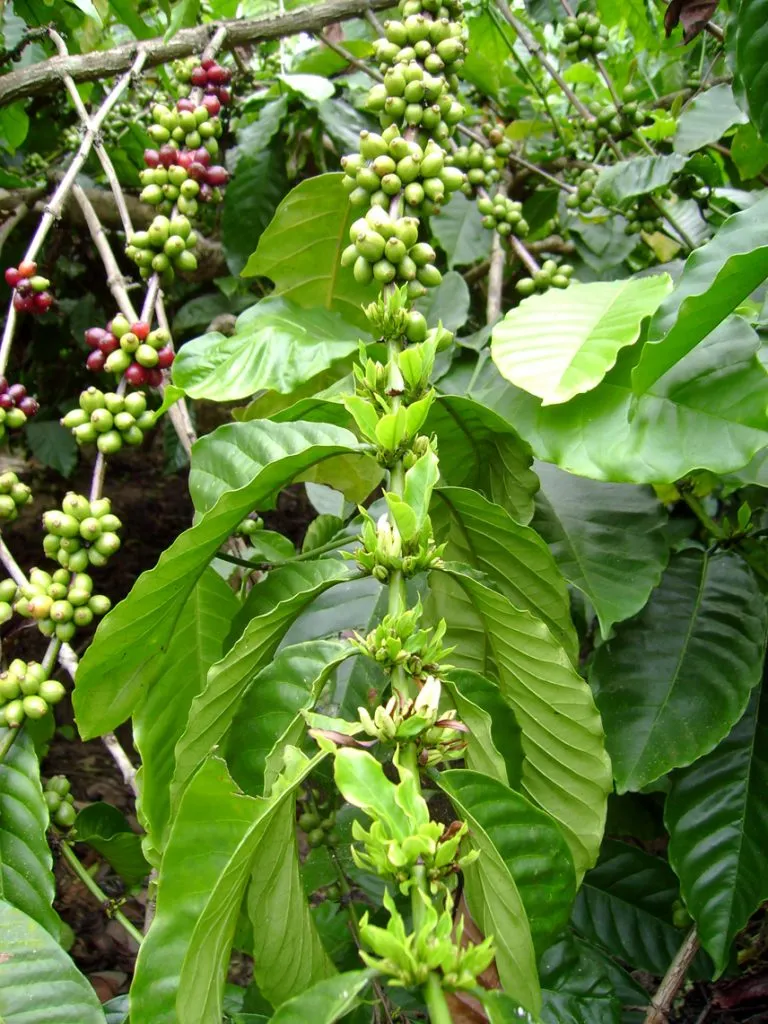
The advancement of the south west monsoon by almost 45 days (2008); lead to a chain reaction of disturbing events. The first to be affected was the internal clock of the coffee bush. It resulted in the imbalance of the biochemical constituents of the coffee bush. It also disturbed the diurnal temperature patterns. The production of growth regulators and promoters was off balance. The bush which was programmed to synthesize and transport chemicals and nutrients to both the vegetative and reproductive parts behaved erratically resulting in more of vegetative growth. The bush appears to be quite healthy but in reality is in an utter state of confusion.
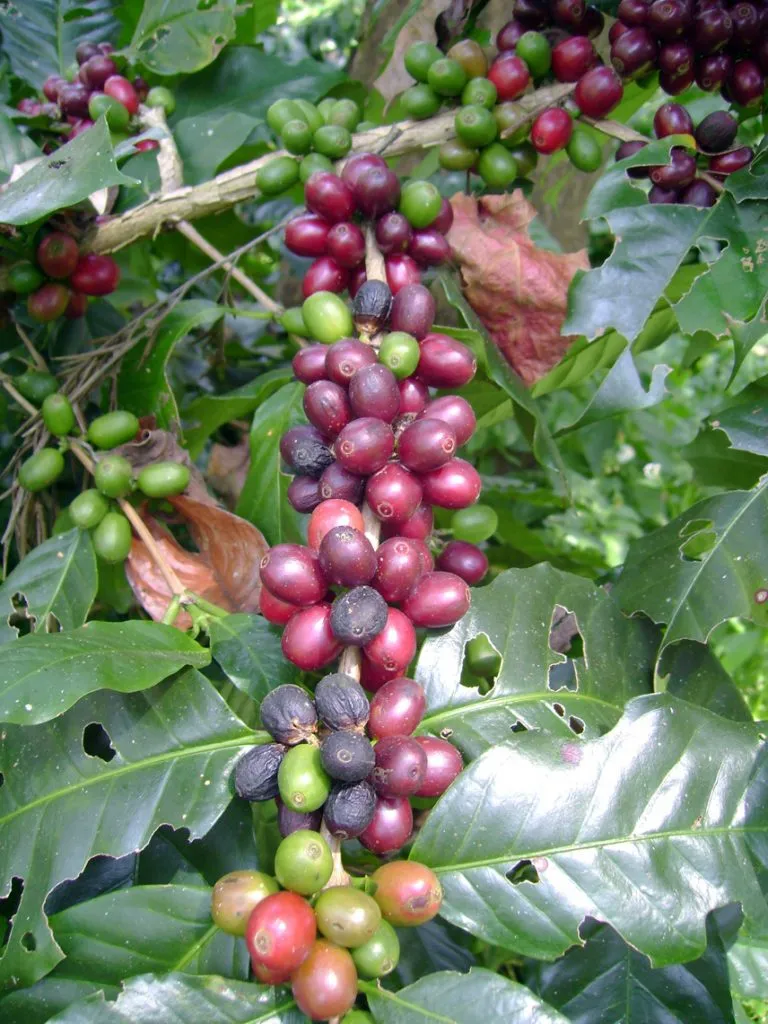
The coffee research Institute clearly indicates that the quantum of wood that is produced both in terms of new flush and extension growth including the number of nodes and foliage formed, plays a vital role in crop production as it becomes bearing wood for the succeeding year. However, climate change resulted in fewer nodes, less amount of productive wood, reduced spikes, giving rise to poor yields.
FLOWERING IN COFFEE
Our research work for the past 2 decades clearly indicates a strong relationship between temperature and flowering. Furthermore, the presence or absence of appropriate temperatures during this critical stage determines the success or failure of flowering and fruiting. The importance of temperature and the promotion of reproductive development is a key factor in stabilizing coffee yields.
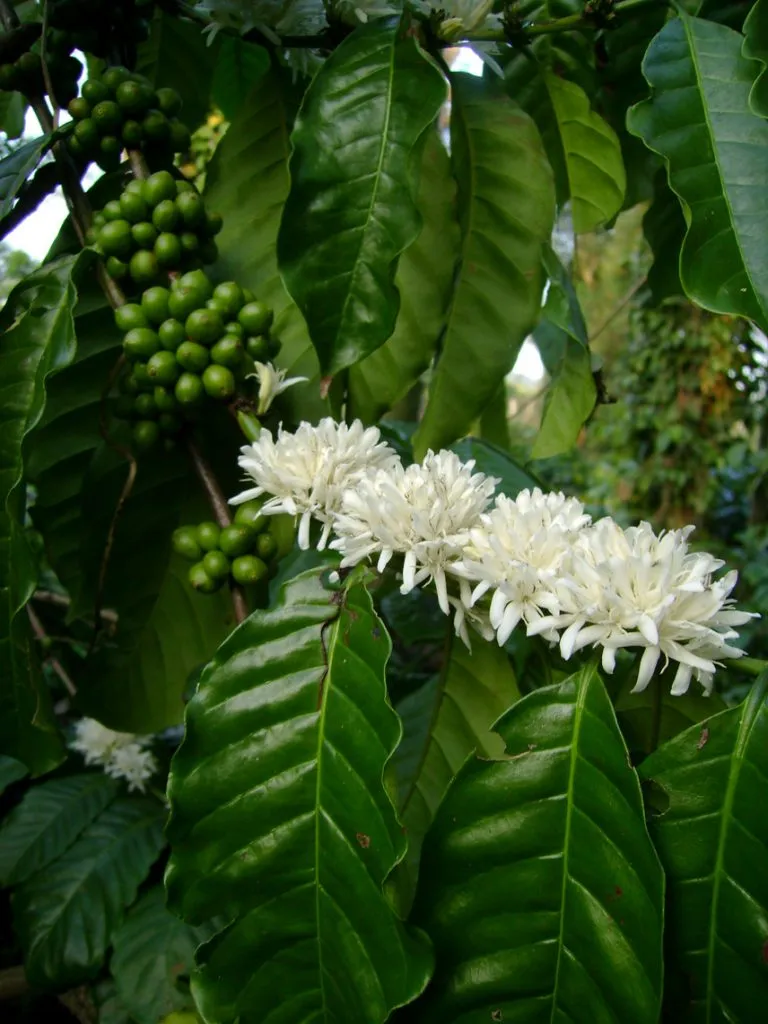
According to research carried out by the CCRI, flower bud initiation takes place from September onwards, under south Indian conditions. The factors responsible for floral initiation are short days (less hours of daylight), carbon nitrogen (C/N) ratio, intermediate temperature and hormonal balance. After elongation to certain length ( 7-8mm), there will be cessation of growth for a few weeks till the receipt of blossom showers. Then flower buds resume their growth faster, change color and open in about 8 to 10 days after the showers. Plants which are depleted of carbohydrates will also show floral abnormalities.
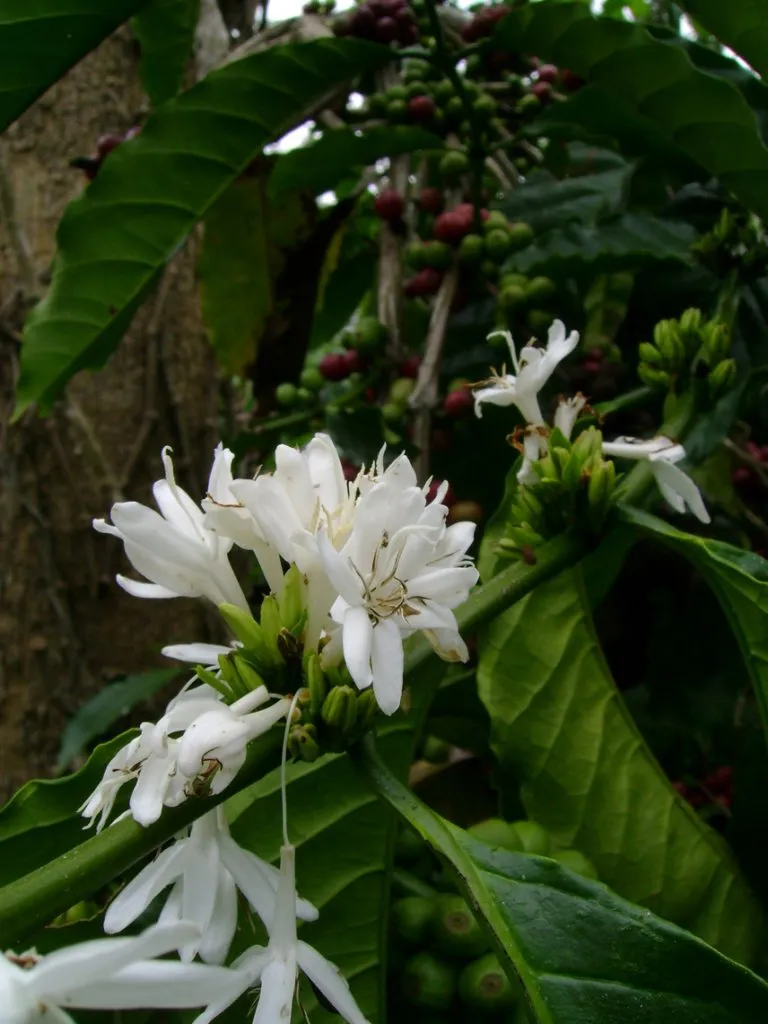
As a consequence of climate change our observations point out that from the month of September onwards coffee growing regions of South India witnessed short day periods with high daytime temperatures and sudden drop in temperatures during the night time. This resulted in abnormal floral initiation. The translocation of carbohydrates was also affected resulting in floral abnormalities. In simple terms, attainment of short day periods does not automatically lead to the initiation of flower primordia. Certain set of environmental conditions must follow. These same environmental conditions, if presented to coffee that is not ripe to flower, elicit no flowering response.
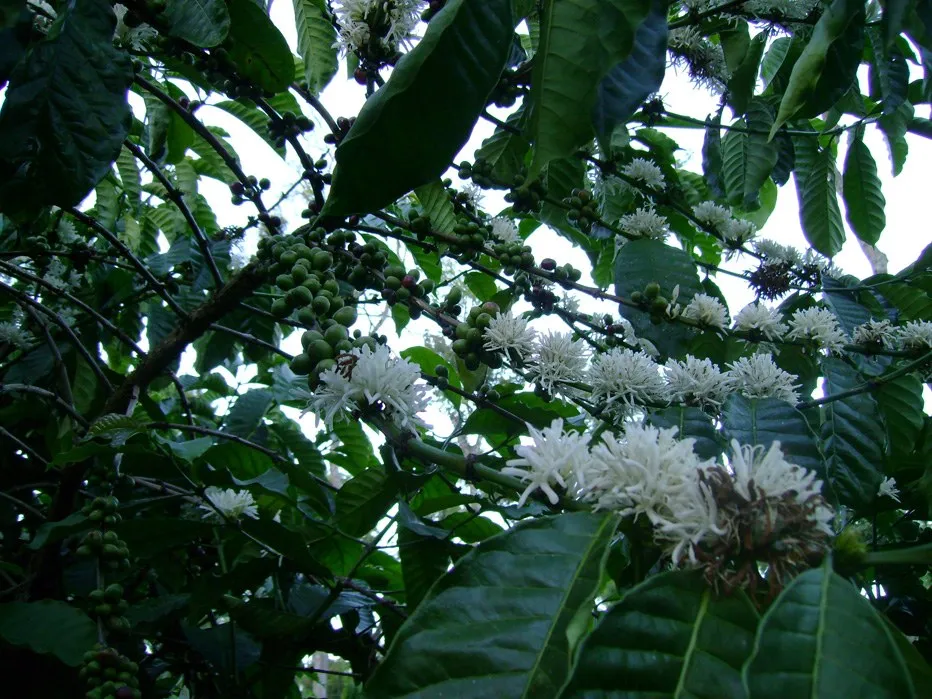
FRUITING
According to the research work carried out by CCRI, The growth of Arabica fruits under south Indian conditions shows a bisigmoidal curve with two grand periods of growth during 118 to 152 and 183 to 212 days after blossom. Robusta coffee takes 6 to 8 weeks more than Arabica coffee for fruit maturity and ripening.
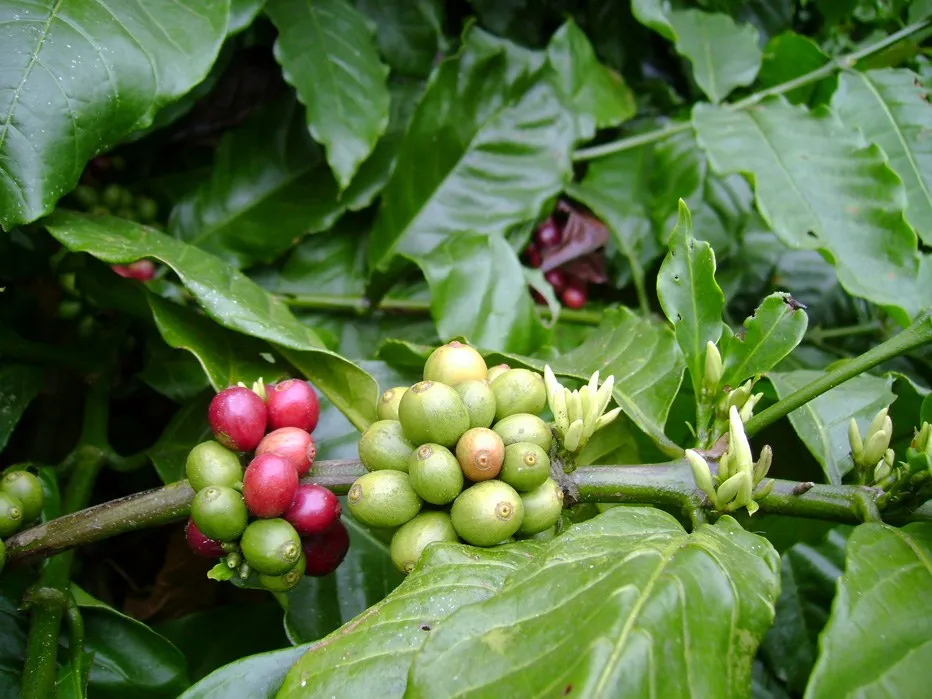
The effect of climate change has impacted the fruiting pattern in both Arabica and Robusta. As a result the farmers commonly observe premature fruit drop. Due to the uneven distribution of rainfall (Sudden down pours & long spells of drought) the plant is subjected to wet feet during monsoon periods and drought during the summer months. The soil pores are waterlogged. A combination of favorable factors for high pest and disease incidence. The resulting defoliation and leaf rust significantly affects the crop.
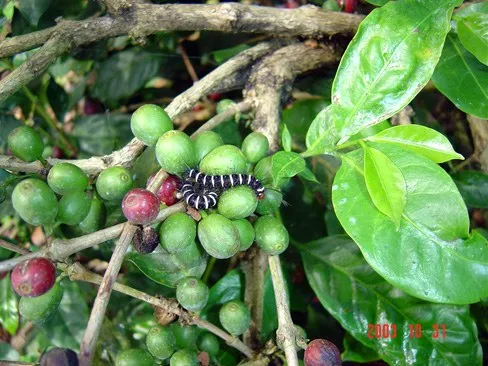
The change in climatic conditions like sudden drop in night temperature, cloudy weather, high relative humidity especially at the time of flowering results in multiple blossoms leading to different stages in berry growth and development. The plant is physiologically stressed and the imbalance in the Biochemical constituents leads to premature fruit drop.
BEAN DISORDERS
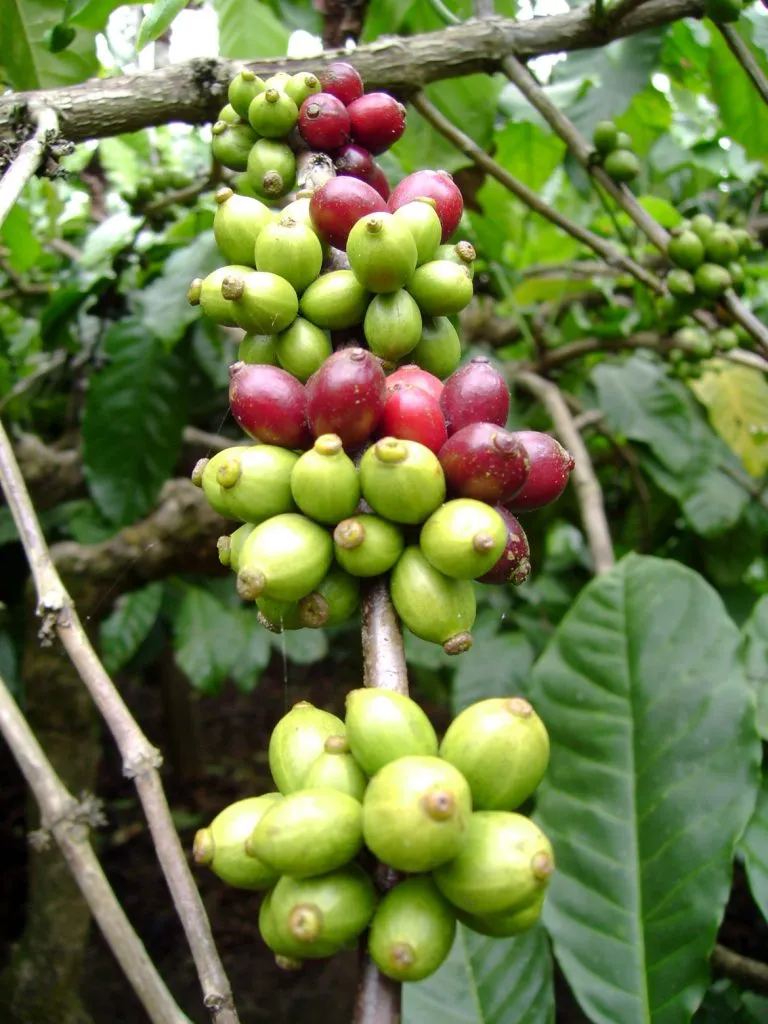
At the time of picking, coffee farmers are perplexed as to the low outturn in the coffee picked. The reasons for low out turn are mainly due to the short supply or depletion of carbohydrates leading to less sugar and starch in beans when compared to healthy beans. We have also observed a higher proportion of single beans in Robusta whenever the bush is exposed to low light intensity due to cloudy weather in the months of august, September and October.
LEAF TO FRUIT RATIO
The internal biological clock determines the effective leaf to fruit ratio. The metabolic changes include a redistribution of water, growth substances, sugars, nitrogenous compounds, organic acids and inorganic ions from roots, stem, and leaves.
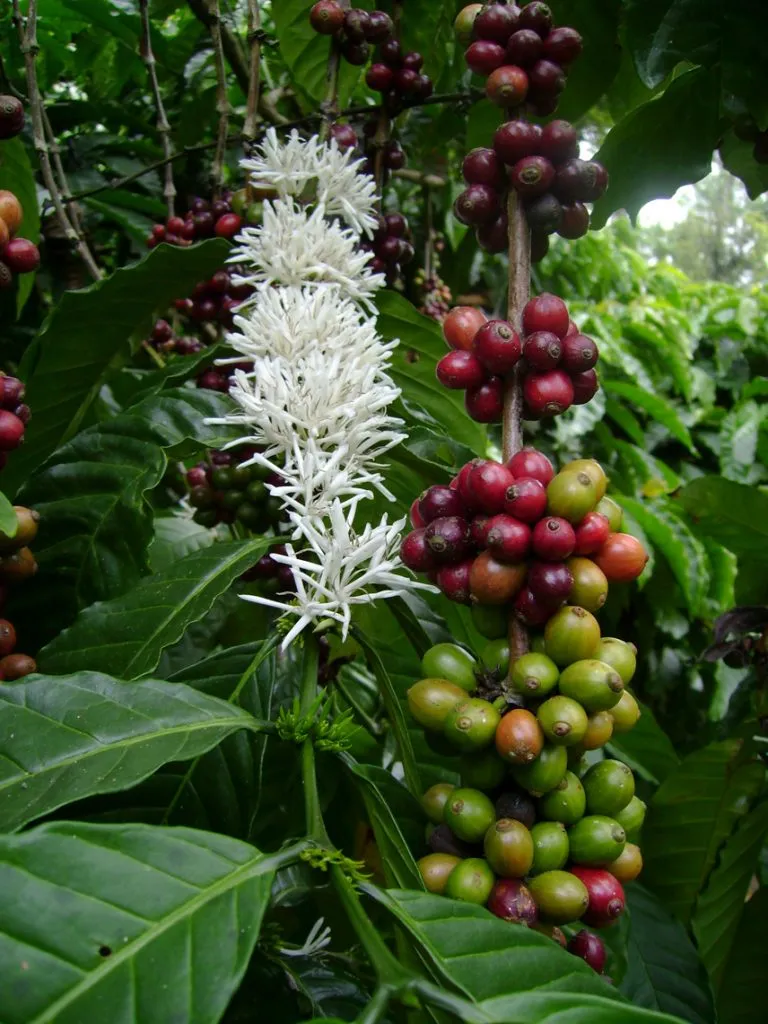
According to the research work carried out by CCRI, the leaf to fruit ratio on Coffee Arabica cv S 795 and Coffea canephora cv S 274 was found to be 1:3 and 1:6 respectively. This ratio may vary from season to season depending on berry drop and defoliation. Their further studies revealed that 17 cm2 and 27 cm2 of foliar areas were required to produce one fruit in Arabica and Robusta respectively. In effect their findings point out to a very important fact that a proper balance between leaves and number of fruits will sustain a crop over a number of seasons without adversely affecting the health of the plant.
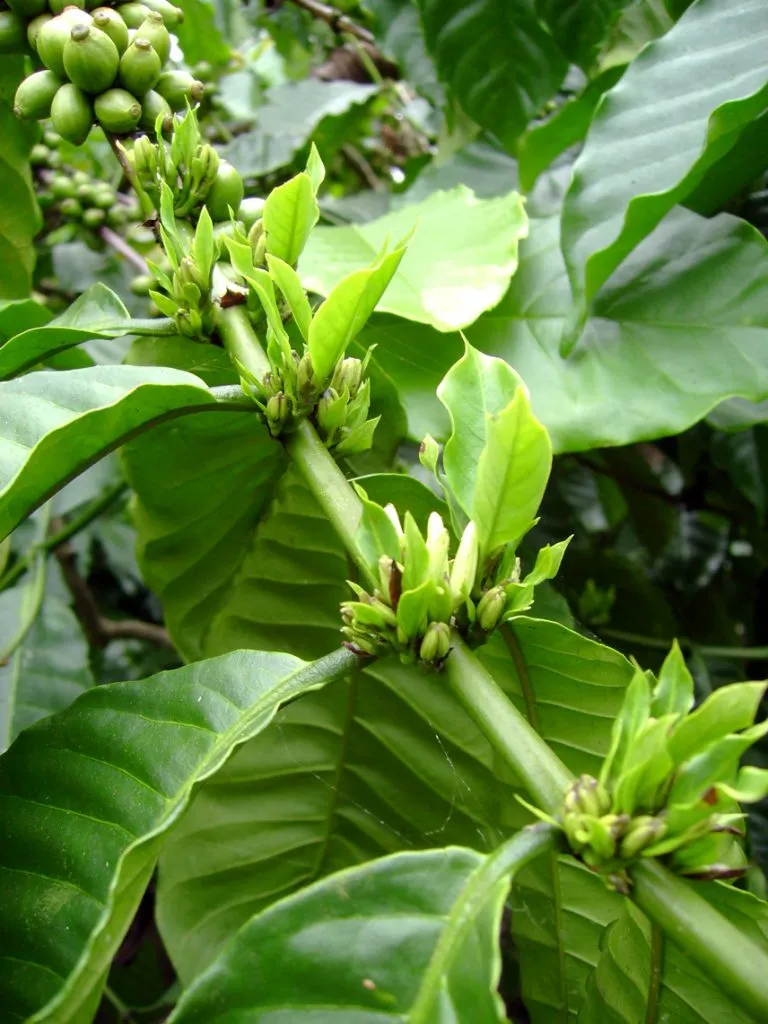
We have noticed that in both Robusta cultivars, old Robusta and S 274 the photosynthates are increasingly being earmarked for vegetative growth leading to lower fruit ratio. The leaf size is above normal, thickened with a waxy coating and internodes too are shortened.
In Arabica, the carbohydrates are diverted towards berry formation leading to regular fruit drop and defoliation.
SUMMARY OF EVENTS FOR THE CROPPING PERIOD 2008-2009
- Premature rains in the early part of February on Good standing crop on the bush, resulting in undue stress on the plant.
- Ripe berries could not be picked because of the initiation of the 10 day flowering period
- More than half the crop could not be harvested because it fell to the ground and got mixed with the soil.
- Coffee on the floor of the forest accelerated the spread of the berry borer pest
- Early and continuous blossom showers resulting in forced and running blossom.
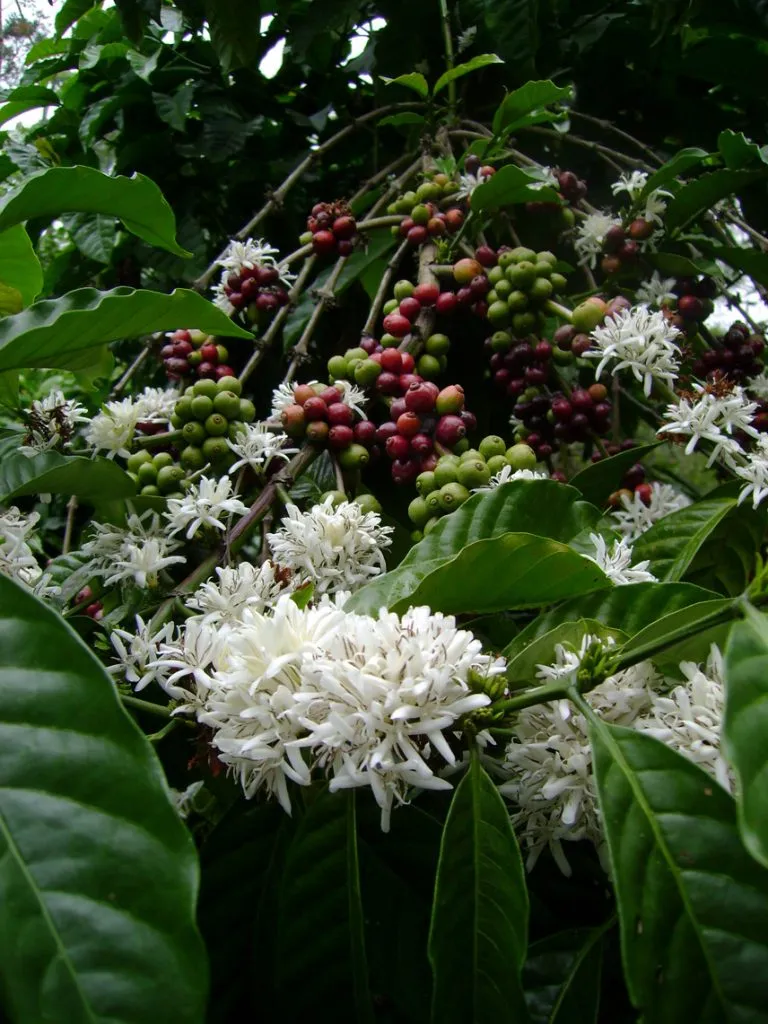
- Running blossom spaced with a time interval of more than a month.

- In some coffee growing belts, heavy and sudden downpour of hail stones.
- No proper time gap for induction of stress which is a prerequisite for healthy blossom
- Disproportionate size of the flowers due to excessive soil moisture regime.
- Rain from morning to dusk on day of flowering
- Entry of rain into spikelet’s resulting in abortion of one ovule in Robusta leading to multiple bean defects.

- Absence of honey bees affecting cross pollination
- Long spell of drought after application of the first round of manures and fertilizers.
- Longer breaks between rainy periods.
- Cloud burst resulting in runoff and erosion.
- Sudden dry spell resulting in non application of second round of manures and fertilizers.
- Formation of weak Nodes and internodes. (Bush in a state of shock)
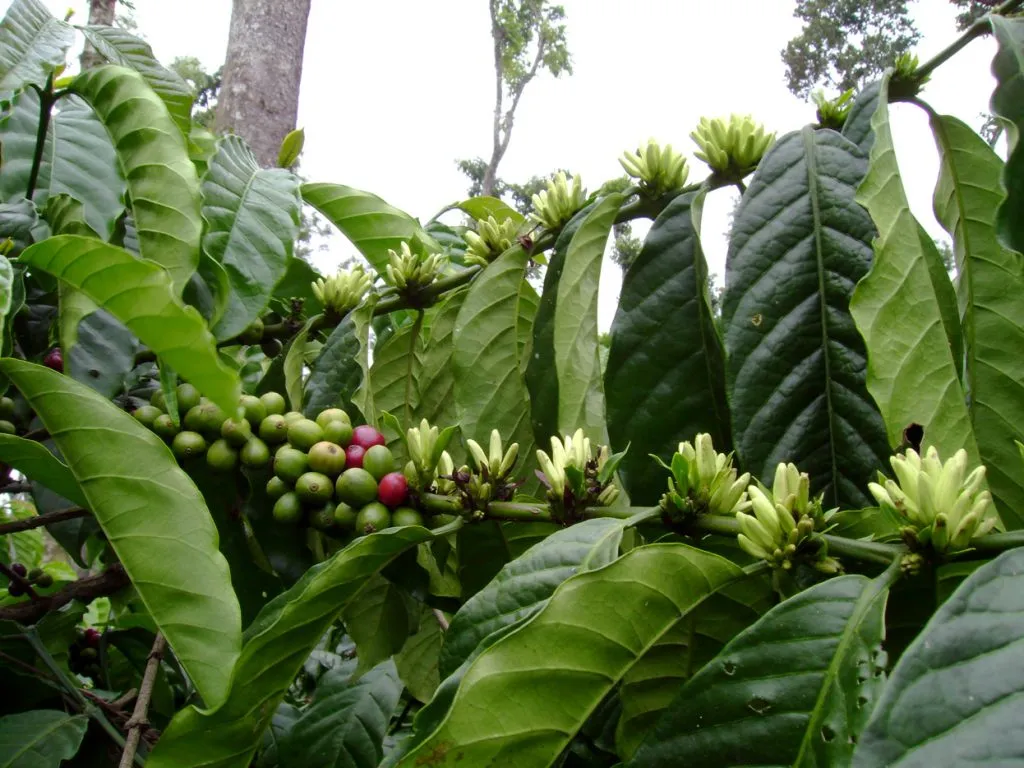
-
Small cluster of berries of different sizes spread all along the length of the branches, instead of tightly packed clusters.
-
During monsoon unexpected high winds causing severe defoliation in young Arabica and Robusta plants and loss of forest cover due to uprooting of trees. Untold economic misery.
-
Defoliation in Arabica cultivars and excessive vegetative growth in Robusta. Imbalance in the vegetative growth and cropping wood.
-
Premature fruit drop and low yields due to uneven growth and development of berries.
-
No time gap for soil to dry, resulting in wet feet.
-
Berry drop at regular intervals due to excess moisture in the soil.
-
Over production in young plants resulting in defoliation.
-
Premature ripening in Arabica (Almost one and a half months in advance) coincides with the north east monsoon. Picking was next to impossible and ripened fruits starting splitting open and falling to the ground due to rain.
-
Drying both cherry and parchment coffee was a herculean task because of the unpredictable rain and cloudy weather
-
Accumulation of afflatoxins and other species of moulds leading to deterioration in quality
-
Coffees of very poor quality, Lower outturn.
-
At time of picking Arabica and Robusta, excessive weed growth due to continuous soil moisture regime.
-
Berries which fell to the ground, acted as hosts for berry borer infestation. (HIGH INCIDENCE OF BERRY BORER)
-
Robusta berries with different sizes leading to different maturities, making picking difficult.
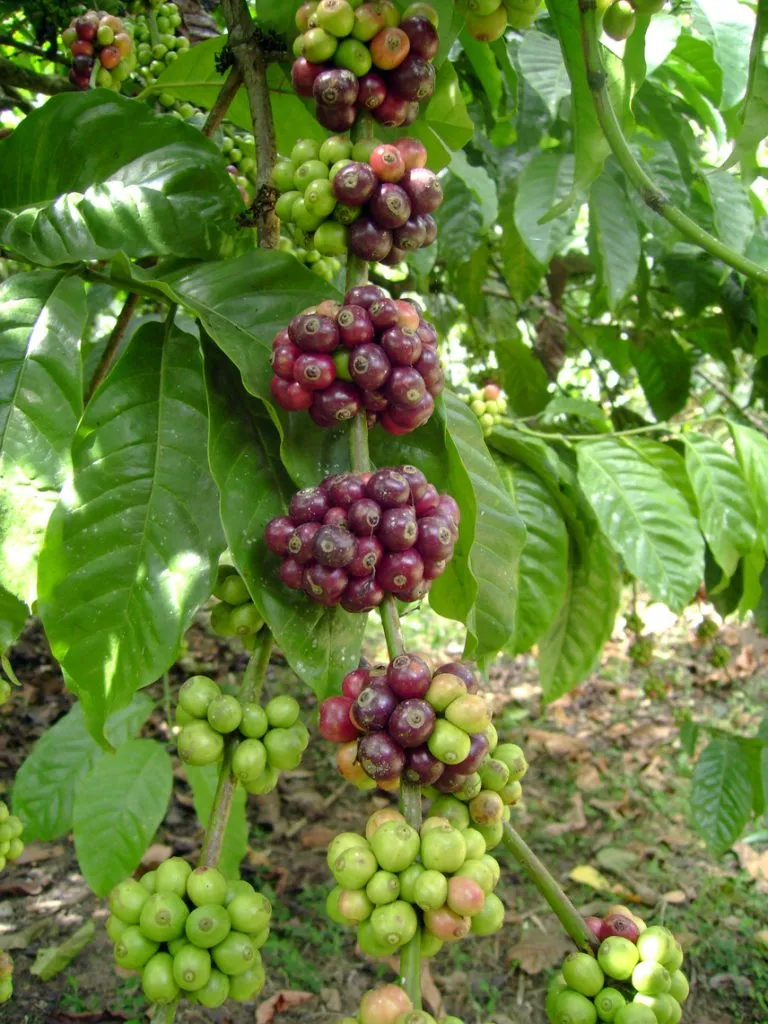
- Early drying up of juices inside Robusta ripe berries leading to lower outturn
- Selection Robusta (S 274) exhibiting significant blossoms (> 15 %) during rainfall in the month of November. (In effect the blossom should be less than 2 %)
- Both Arabica and Robusta exhibiting patterns of nutritional disorders
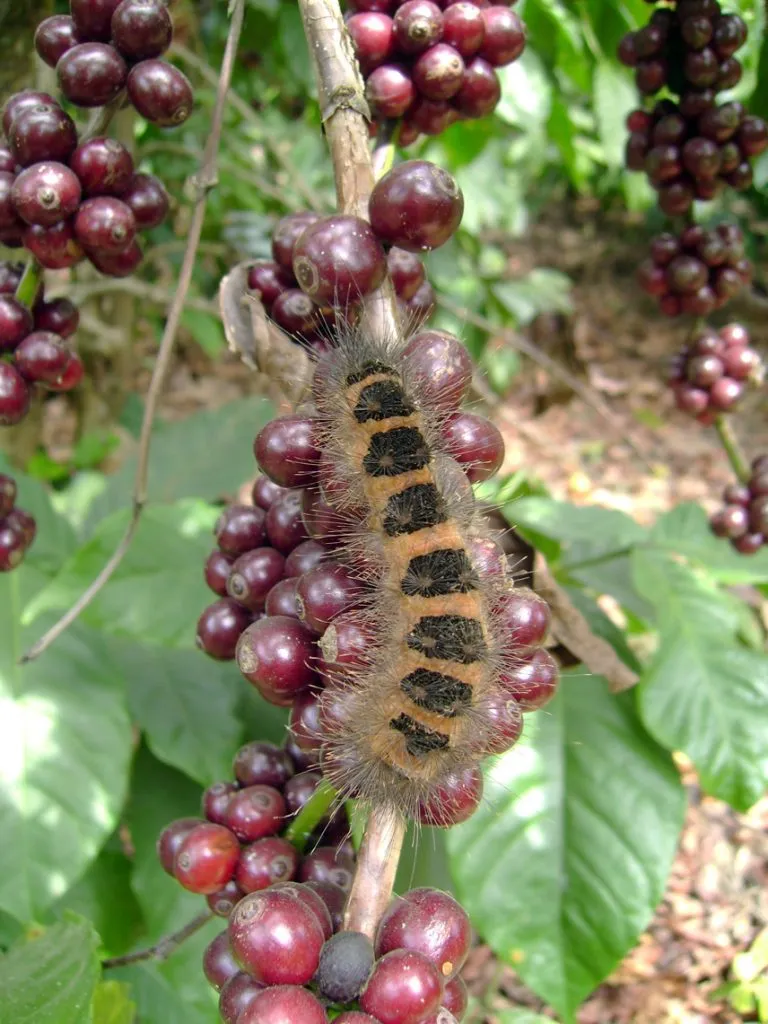
- Activity of high pest and disease incidence
- Prolonged and intense cold weather favoring high pest and disease incidence.
- Early flowering results in the formation of smaller and single beans.

- Early flowering can also result in flower drop during harvesting of beans.
- Heavy rains and hanging mist results in wet feet conditions-leaf and root diseases
.
CONCLUSION
Environmental factors like sunlight, moisture and temperature plays a crucial role in the growth pattern of coffee that leads to formation of roots, shoots, leaves, flowers and other structural entities characteristic of the plant. Even a slight deviation from the normal pattern can have great impact on the yields of coffee.
All biologically important reactions taking place inside the coffee bush are governed by a set of stable environmental conditions. In particular the bush is quite sensitive to temperature variations. If temperatures are too low, biological reactions are stifled by inadequate energy, while the complex structures of proteins become disrupted by temperature extremes in either direction. The engine of growth driving the coffee forest ecosystem is the solar radiation. Due to the impact of climate change the entire range of forests is subjected to an unpredictable regime of light and temperature. This impacts most of the biological processes. resulting in low yields and high pest and disease incidence.
Climate change has directly affected coffee farms worldwide. The monsoon dynamics has totally changed. A time may soon come where coffee may not be the preferred crop inside coffee forests. This can result in serious ecological damage across the length and breadth of the coffee mountain. The future of 25 million coffee farmers and workers in underdeveloped and developing countries is also at stake. It is in humanities best interest to save the coffee forest.
REFERENCES
Brock. T. D. 1979. Biology of Microorganisms. Third Edition. Englewood Cliffs. Prentice-Hall.
Coffee Guide. 2000. Central Coffee Research Institute, Coffee Research Station. Chikmagalur District. Karnataka. India.
De Witt. W. 1977. Biology of the cell. An Evolutionary Approach. W.B. Saunders Company. Philadelphia, London, Toronto. .
Goldsby. R. A.1979. Biology. Second Edition. Harper and Row publishers Inc.
Leopold. C. A. and Kriedemann. P. E. 1975. Plant Growth and Development. 2nd edition. Tata McGraw-Hill Publishing Company LTD. New Delhi.
Mitchell. H.W. 1988. Cultivation and Harvesting of Arabica coffee tree. In Clarke, R.J. and Macnae. R. (Eds). Coffee. Vol.4. Agronomy (pp. 43-90). Elsevier Applied Science. London and New York.
Noggle. R. G. and Fritz. J. G.1986. Introductory Plant Physiology. 2nd edition. Prentice-Hall of India Private Limited. New Delhi.
Tilman. D. 1982. Resource Competition and Community Structure. Princeton University Press, Princeton, NJ.
Kotpal, R.L. and N.P. Bali. 2003. Concepts of Ecology. : Environmental and field biology. Vishal Publishing Company, India.